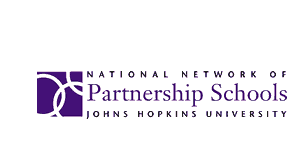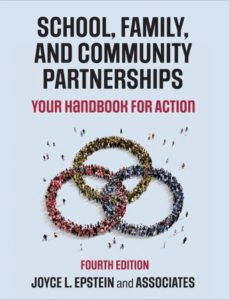March 2018
Prevent Gun Violence and Increase School Safety: Are These Partnership Goals?
Joyce L. Epstein, Ph.D., NNPS Director
The agenda is daunting: Prevent gun violence and increase school safety. Students from Marjory Stoneman Douglas High School and—by marching—students from across the country inspired the nation to address the complex and connected problems of gun violence and school safety. These big problems will require big, broad, and simultaneous solutions at the national, state, local, and school levels.
Prevent Gun Violence
Gun violence includes but is not limited to school sites. The statistics of death-by-gun in the United States are staggering in communities and in schools. Given the number of guns in the nation and the importance of the 2nd amendment to the Constitution, it will be a challenge to change laws to regulate the age and background checks of gun purchasers; the availability of assault weapons, high capacity ammunition clips, bump stocks; and other legislate-ables. The agenda for preventing gun violence also includes gun safety education for gun purchasers; job training for law enforcement and school resource officers; gun buy-backs, and home safety rules for gun owners. In addition to sharper laws, better mental health counseling and treatment will be needed for troubled individuals to prevent violent acts. Preventing gun violence will require a comprehensive approach to the acquisition of and access to guns, plus swift and responsive diagnosis and treatment to solve related problems. This agenda—prevention and treatment—focuses clearly on the guns and the people with guns.
Increase School Safety
School safety focuses clearly on relationships that will work to keep guns out of schools and enable students to solve problems without guns and violence. Some tough mechanical solutions may help keep schools safe, such as strong and secure doors and windows, security officers, metal detectors, lock down drills, rules about weapons in school, and surveillance systems. However, interpersonal relationships may be the most powerful tools to ensure school safety, improve the school climate, and increase student success in school. This includes a full staff of counselors to support students’ social and emotional health, and comprehensive programs of school, family, and community partnerships.
For more than 20 years, the National Network of Partnership Schools (NNPS) at Johns Hopkins University has been conducting research and developing research-based workshops and tools to enable districts and schools to implement goal-linked programs of family and community engagement. An excellent school has a safe, nurturing, and welcoming climate for all students, teachers, parents, and community partners. In addition, an excellent and safe school addresses its main responsibility to help all students achieve to their full potential.
In NNPS, districts and schools activate the theory of Overlapping Spheres of Influence, which asserts that students do better in school when home, school, and community work together to support students’ learning and development. Schools in NNPS have an Action Team for Partnerships (ATP) of teachers, parents, administrators, and others who work together to ensure a welcoming school climate and to help all students meet learning and behavioral goals. ATPs use a framework of six types of involvement (parenting, communicating, volunteering, learning at home, decision making and collaborating with the community) to engage all parents and the community in different ways and different places.
At the heart of good partnerships are two-way communications (Type 2-Commmunicating activities) that ensure that all parents and all teachers build trust and mutual respect for each other’s important contributions to student learning and development. These communications may prevent emerging problems and contribute to safe schools and healthy students at all grade levels.
To create a welcoming climate and safe school, ATPs conduct activities for all six types of involvement that strengthen students’ understanding and empathy for peers with different racial and linguistic backgrounds, talents, and abilities; eliminate face-to-face- and cyber-bullying; help students set personal goals and gain recognition for good work; build leadership skills; and end feelings of despair and anger that may lead to violent behavior.
Partnership Plans and Practices for Safe Schools
In particular, Type 3-Volunteering and Type 6-Collaborating with the Community are especially powerful in helping schools improve school safety. Here are a few of scores of examples implemented over the years in NNPS schools to increase school safety.
Type 3-Volunteering. Parents, grandparents, and others may serve as helpful volunteers who improve school safety and deter gun violence and other violent school behaviors.
Family Greeters at one high school welcomed visitors in the front lobby and directed them to their destinations. They were praised and appreciated as guards, greeters, and valued volunteers.
Pops on Patrol—grandparent volunteers, D.O.G.S (Dads of Great Students), and local variations prepare volunteers to greet students and protect them as they walk, bike, or bus to school, walk in hallways, and play on the playground. These volunteers reduce behavior problems and motivate students to have a great day at school.
Buddies Not Bullies at one elementary school used a Buddy Bench to ensure that students who felt alone or isolated would find a friend to eat lunch with or play games with—thereby reducing feelings of loneliness and exclusion.
Type 6-Collaborating with the Community activities enrich the school curriculum, engage students in work and community improvement activities, and provide services to families to promote safe and healthy schools, students, and families.
Community Fairs in customized forms at many schools provide information from community groups about counseling, mental health, talent development, and other services that may help students and families.
Hope and Healing: Surviving The Middle School Years and other forums with community service providers may help students, parents, and teachers discuss challenging topics (e.g., preventing drug abuse, teen suicide, sexual abuse, dating and domestic violence, online predators). These forums may help parents understand child and adolescent development, reduce students’ violent actions, and increase school and community safety.
Mentors are community members and parents who are prepared to serve as trusted contacts, guides, and friends to students and their families. Man-Up Initiative and many variations on this theme included men and women from the community to guide boys and girls at different grade levels in academics, life skills, positive behavior, and plans for college or careers. One student explained that a mentoring program “keeps me out of trouble.”
See these and other activities in NNPS’s annual books of Promising Partnership Practices.
There are, in fact, hundreds of ideas to build students’ skills and talents, address family needs and questions, strengthen a sense of community, and increase school safety. Investments in good partnerships help students reject violence and embrace the challenges of school life.
Schools working on good partnerships also may connect with business, industry, local government, and other partners for contributions and assistance with the mechanical components of school safety. Partners may help by installing security and surveillance systems, establishing frequent patrols by local police, and by engaging community service providers in school clubs, classroom presentations, and special events.
It is not easy to create and maintain safe schools, but it is imperative. A proven approach is to strengthen and sustain comprehensive programs of school, family, and community partnerships.
NNPS is committed to assisting districts, schools, states, and organizations to fulfill this imperative for safe schools and successful students.
_________________________________________
NOTES:
- Also see the Youth Violence Project at the University of Virginia for eight steps to prevent gun violence, improve gun control regulations, increase mental health, and improve the school climate: (https://curry.virginia.edu/prevent-gun-violence). Several of the suggestions can and should incorporate practices of school, family, and community partnerships to create a welcoming school climate and safe school for all students
- This is not a new problem. NNPS has been working with districts and schools to develop school, family, and community partnerships for many years (see early report on partnerships for school safety – Mavis Sanders, 1996).
- Thanks to Megumi Hine, NNPS Coordinator, for contributions to this Type 2 Blog and references, and to Marsha Greenfeld, NNPS Senior Facilitator, for Promising Partnership Practices activities that promote school safety.

